
Hussain, Vaughan, Strauss…. Amla…. 3-1 and counting…..
I reckon I’ve now seen more runs scored live by Hashim Amla than any other opposition Test player. So enough of him, because I can’t remember a single one of his runs. Instead, I’ll treasure Ben Stokes astonishing 250. Watching it was to be in a state of denial. So good, it can’t really be happening. Then there was Jonny Bairstow’s maiden 100 for Dad, Bavuma’s for millions of his countrymen, Faf’s for some young journalist’s forthcoming book of the most forgettable innings of all…… Wait, Faf got a ton?
What a Test. England, so England: the greatest score of over 600 and then shitting ourselves by nearly losing the match in history. But you can read about it elsewhere. Here are my random memories from the stands.
Tickets and seats: I suspect most of us would agree that Newlands is quite possibly the most beautiful international cricket ground in the world, especially now that Adelaide has been spoiled for Aussie Rules.
Tickets for Days 1 and 2 sold out online very quickly, and I could only get them for Days 3 and 4. Fortunately, my friend Diane (@Dewgirl99) managed to arrange some for me. Indeed, it turned out that lots of traveling Brits had spares. I ended up with two, and in the shade, thanks to @PaddyBriggs. And they were cheap, £6-£8 each. Also, once in the ground, the locals seem to be relatively relaxed where you actually end up sitting. It was so hot that people were migrating into the shade at the back of the stands, occupying empty seats. If their owners came back, no problem, just move somewhere else. Later, as people left and the shadows lengthened, we sometimes moved to the boundary edge and a great ground level view that you normally get in club cricket. By Days 4 and 5 the crowd had thinned a bit and I just sat where I wanted the whole day.
Beer: Forget the Castle rubbish. The Mitchell’s Brewery had a mobile bar round the back of the President’s Pavilion, and their Forester’s lager and Boson’s bitter went down very well with the visitors. There’s a strange system where you have to buy tokens first, and then pay with one of them, but I guess that gives someone a job.
The Guerillas: Guerilla cricket is an alternative commentary service that basically consists of some knowledgeable fans sitting in a house somewhere in London watching the cricket on TV and commentating over the internet. Often, the quality of the punditry, and the humour, is light years ahead of some of the “professional” stuff (Messrs. Atherton, Hussain, Lloyd and Holding excepted). Actually, thinking about it, could we please put Shane Warne and his Channel 9 mates in one of those 2D glass prison things in which General Zod and co were banished from Krypton in Superman……
Anyway. Guerilla Cricket has a loyal following of fans on Twitter who talk to each other and join in debates with the commentators during the match. Over the years I’ve met some of these fellow cricket tragics, and it was wonderful to see them in Cape Town and meet more for the first time. So thank you for making my trip so memorable, and looking forward to renewing friendships in far flung venues in the future, to Diane (@DewGirl99), Kate (@DutchBirdKate), Katy Scott (@ithilienorthend)), Hazel (@HackneyHaz), Ian (@Marriotti67), Jason (@jasonghiscox), and Paddy (@PaddyBriggs), and it was good to talk to Cricinfo’s George Dobell again, albeit too briefly!
And thank you to @guerillacricket for bringing us all together!
The stadium “entertainer”: Every morning as I took my seat my ears were left bleeding by the inanity of the bloke paid to “entertain” us before the match started. Generally, this involved him going around the stands interviewing mainly clueless but eternally optimistic South African fans (“Ja, I think we’ll bowl them out for one-fifty and chase it down”). Fortunately, every Brit he engaged with ended up taking the piss in that very dry manner we have, the one which often leaves our colonial friends bemused as to what just happened. Some memorable examples:
Entertainer: “Who have you come here with?”
Brit: “These bastards.”
—–
Entertainer, to an England fan dressed as a dragon: “How do you think this will go today?”
England fan: “No idea mate. I’m a dragon.”
———–
Entertainer, to some Barmies taking part in a cooking competition for the local sponsor: “Do you think you’ll win?”
Barmy: “Doubt it. I’ve never cooked before.”
————–
The Hashim Amlas: Early on Day 2 a large platoon of Saffer fans dressed as Hashim Amla, complete with identical false beards, filled up a section of the North Stand. Almost immediately they tried out a few songs, admittedly not very good ones but slightly better than the 3 tunes the Aussies know. Their side was getting hammered to all parts by Stokes and Bairstow, so their stoical effort to support their team was appreciated by the England fans, who know all about that kind of experience.
Eventually they happened upon the Hashim Amla chant, to that 2 Unlimited melody. In the next section were some Barmies, who recognised the opportunity and joined in chanting Moeen Ali’s name. Soon, the Dueling Beards song was born. And we thought it was hilarious.
Later in the day, when England were fielding, Moeen Ali was stationed right in front of them and the Dueling Beards chant restarted and went on for ages. Some may have found it tedious, but as well as tickling the humour of the 12 year old boy in me, it was a great example of how the vast majority of cricket fans can just sit together, get along and have a laugh without any animosity.
The declaration: You are smashing it to all parts. A session or two more and you could beat 903, The Oval 1938. It’s 3 in the afternoon on the second day. So you declare. Noooooooooo. Get your runs while it’s easy. The Saffers were gone. Even the genius that is De Villiers was dropping catches. You never know what might transpire later in a Test match. And so it proved. That was a declaration by computer statistics. No one has ever lost after scoring 600 etc. But I suspect no-one had ever scored 600 by 3pm on Day 2 either. Still, at least none of the Saffer fans thought they had the remotest chance of winning. Oh, wait.
Flags: There was little problem with hanging the huge collection of flags brought along by England fans. Unlike our grounds, and some Aussie grounds, the fun police don’t seem to exist here. Indeed, the Saffers had a few of their own. Marvelously, their attitude seems to be, “Oh, you’ve got a flag and you support x football club. That’s nice.” I placed the Preston CC (Herts) union jack at square leg / cover point on Days 1 and 2, and you can see it in the TV shot of Jonny Bairstow celebrating his ton.

The PCC flag enjoying pride of place at square leg
Unfortunately, there was a problem for some flags at the end of the day. Stupidly, I forgot to take mine down before enjoying a post-match pint. When I returned, it was gone. I later learned I wasn’t the only fan whose flag had been pinched (although some seemed to be left up overnight without trouble). Incredibly, the Lost Property office proudly claimed they hadn’t had a single item turned in all match. I wonder why. I’ll comfort myself with the thought that some kid on the Cape Flats will be wrapped up warm in a Preston CC (Herts) flag this winter, but I’m peeved and angry at myself. That flag has been to a few famous matches (MCG & Sydney 98/99, Perth, MCG & Sydney 2010/11). My sincerest apologies to Greig and Fleckers.
Beards: My favourite flag in the ground was the Beard Liberation Front’s, proudly being looked after by @HackneyHaz and @Marriotti67. Of course, Hashim and Moeen take the honours for cricket beards, but Hazel nominated me for Small Beard of the Test, and Keith Flett mentioned it in dispatches…..

Grace, Marx, Burleigh…
Bavuma: To be honest, I was so bored and so hot by the time that young Bavuma got his innings going that I went for a futile “wicket walk” and missed most of it. The Saffers were of course ecstatic at his hundred, the first for them by a player from the communities labelled “black” under apartheid (as opposed to “coloured”). It was a very significant moment which I probably didn’t quite appreciate, having by that point decided that the next ton on this pitch would be scored by Sir Geoffrey’s mother with her stick of rhubarb. But as we exited the ground that evening, the black steward on the gate was chanting “Bavuma, Bavuma”. Clearly, it meant a great deal to him.
England fans and Test cricket around the world: Over 85,000 attended the Cape Town Test, the biggest combined crowd in Newlands’ history. There were thought to be about 12,000 from the UK, most of whom went each day (so about half the total attendance were visiting fans). Last January, I was in Cape Town visiting the Observatory when South Africa played the West Indies in the equivalent fixture. I went along to the ground to discover the proverbial 3 men and a dog watching. South African fans generally don’t turn up for Tests, apart from Cape Town when it isn’t a working day and when the opposition aren’t perpetually useless.
In the Springbok Bar after the 5th day of this match ended, a Saffer fan said to us: “That was great. Can we play you every year?” But the ECB don’t appear to like playing South Africa, presumably because there’s no money in it. In the 6 years between the last tour and this one we played just 4 Tests at home in 2012 against the great side of Smith, Kallis, Boucher, Amla, De Villiers, Steyn, Morkel and Philander. Absolutely criminal.
This New Year, across the Indian Ocean, Australia were wiping the floor with the West Indies in complete mismatches of Test fixtures. One evening, over 80,000 decided a Big Bash 20/20 at the MCG was more interesting. Why they didn’t arrange 5 Tests against the Best New Zealand Side Ever is beyond me, but completely in keeping with the patronising attitude the convicts have always had to Kiwi cricket (I’ve also seen it suggested that NZ, SA and Aus all want home Boxing Day Tests. If so, someone needs to compromise occasionally). Meanwhile, the Windies are a shambles, their board constantly unable to stem the rot, and the game’s global governing body utterly uninterested in properly aiding them, or indeed protecting, promoting and growing its sport beyond the Big Three money grabbers (India, England and Oz).
Like many, I worry about Test cricket’s future. If you haven’t seen Death of a Gentleman, the film which exposes the whole charade, please do. You can buy it off Amazon.
But at least there’s the England fans, trooping around the world supporting their team, pumping money into the local economy and boosting Test cricket’s profile wherever they go, while generally contemptuous of their own Board’s role in the slow destruction / failure to promote this sport in some countries. And remember, there’s only 10 that play it at Test level.
“Can we play you every year?…….”



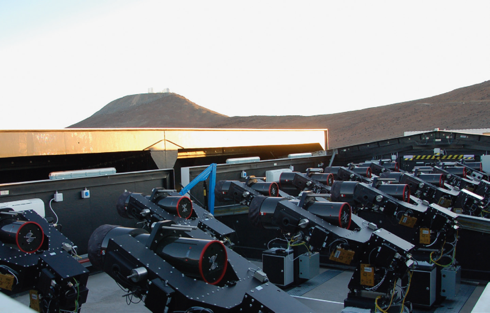



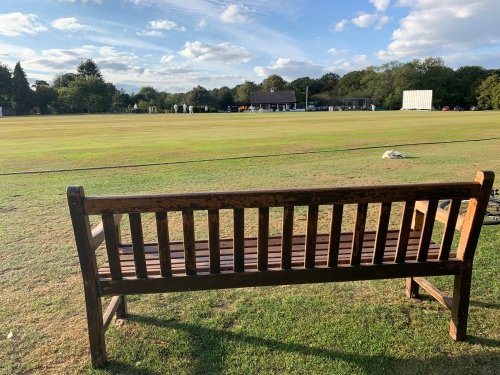
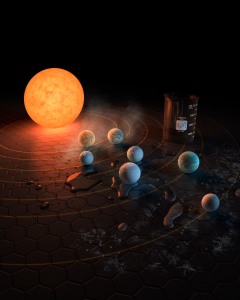

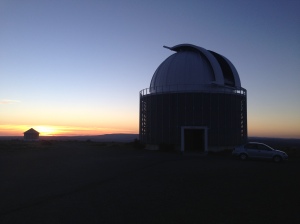
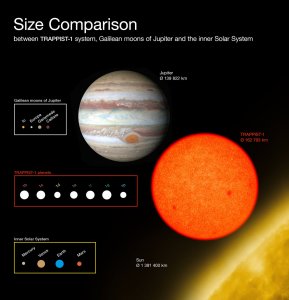 Thanks to a whole programme of observations with different telescopes and the NASA Spitzer satellite over the last few months, we now know that there are at least seven planets in the system, all roughly the size of Earth. The reason we didn’t see our expected transit from South Africa, was because we were confusing different planets with each other, and getting their orbits all wrong.
Thanks to a whole programme of observations with different telescopes and the NASA Spitzer satellite over the last few months, we now know that there are at least seven planets in the system, all roughly the size of Earth. The reason we didn’t see our expected transit from South Africa, was because we were confusing different planets with each other, and getting their orbits all wrong.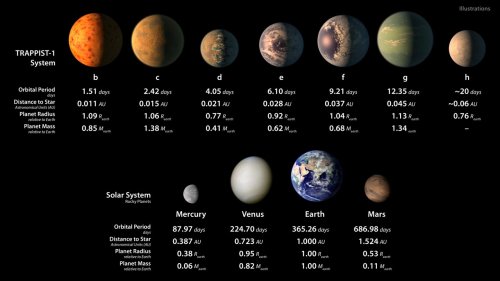




Recent Comments